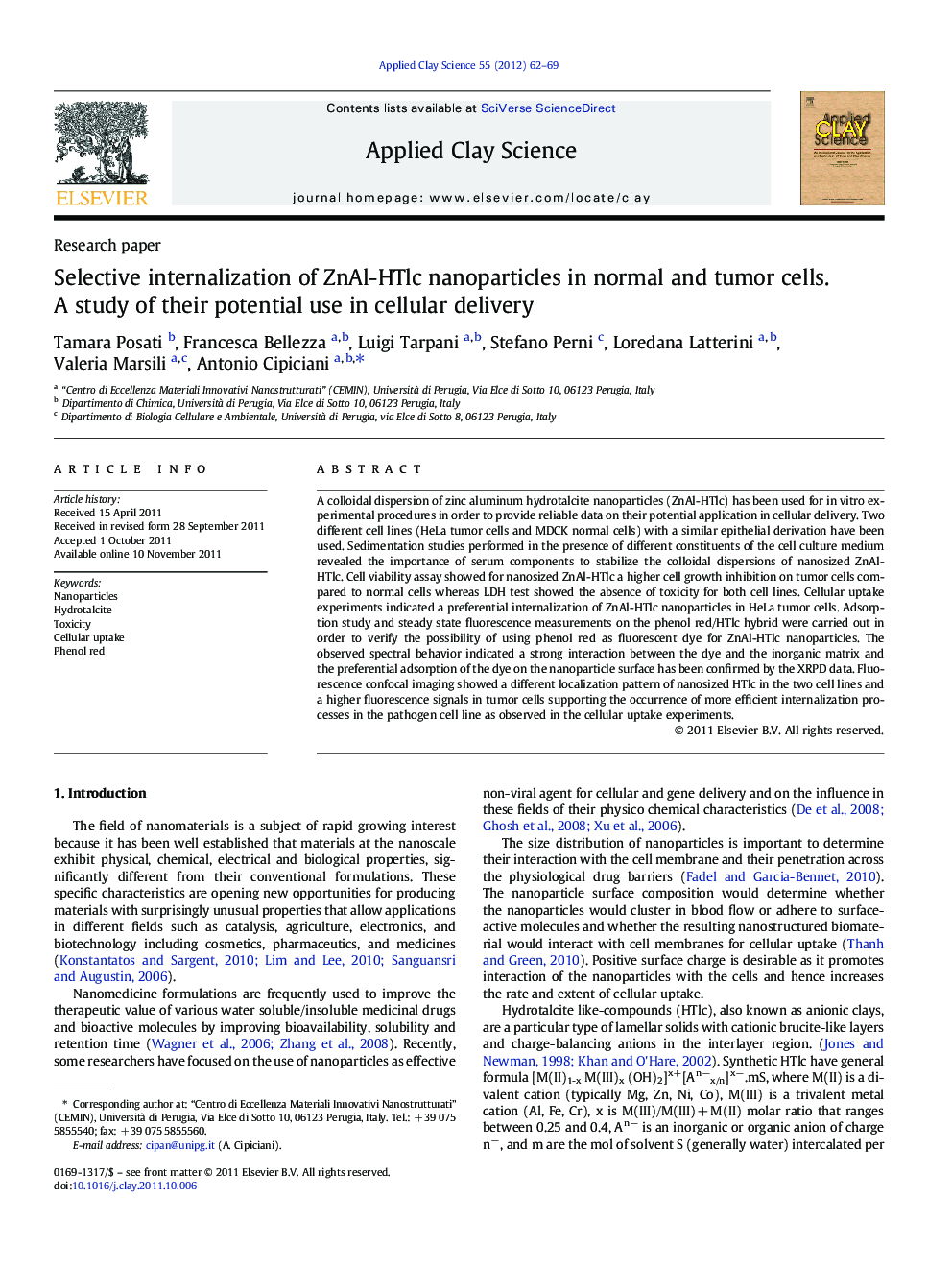| Article ID | Journal | Published Year | Pages | File Type |
|---|---|---|---|---|
| 1695339 | Applied Clay Science | 2012 | 8 Pages |
A colloidal dispersion of zinc aluminum hydrotalcite nanoparticles (ZnAl-HTlc) has been used for in vitro experimental procedures in order to provide reliable data on their potential application in cellular delivery. Two different cell lines (HeLa tumor cells and MDCK normal cells) with a similar epithelial derivation have been used. Sedimentation studies performed in the presence of different constituents of the cell culture medium revealed the importance of serum components to stabilize the colloidal dispersions of nanosized ZnAl-HTlc. Cell viability assay showed for nanosized ZnAl-HTlc a higher cell growth inhibition on tumor cells compared to normal cells whereas LDH test showed the absence of toxicity for both cell lines. Cellular uptake experiments indicated a preferential internalization of ZnAl-HTlc nanoparticles in HeLa tumor cells. Adsorption study and steady state fluorescence measurements on the phenol red/HTlc hybrid were carried out in order to verify the possibility of using phenol red as fluorescent dye for ZnAl-HTlc nanoparticles. The observed spectral behavior indicated a strong interaction between the dye and the inorganic matrix and the preferential adsorption of the dye on the nanoparticle surface has been confirmed by the XRPD data. Fluorescence confocal imaging showed a different localization pattern of nanosized HTlc in the two cell lines and a higher fluorescence signals in tumor cells supporting the occurrence of more efficient internalization processes in the pathogen cell line as observed in the cellular uptake experiments.
Graphical abstractFigure optionsDownload full-size imageDownload as PowerPoint slideHighlights► Nanosized ZnAl-HTlc have been investigated for cellular delivery. ► MTT and LDH assays were performed to test HTlc biocompatibility and toxicity. ► Cellular uptake experiments showed a higher internalization of HTlc in tumor cells. ► Phenol red adsorbed on the HTlc acts as a fluorescence label for confocal analysis.
